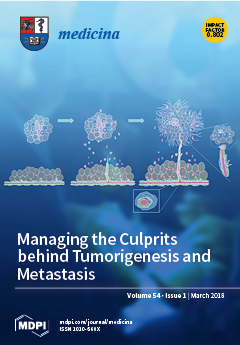Introduction: Pregnancy, infancy, and early childhood are periods of rapid growth and development. The role of nutrition is very important during these critical growth and development periods. The aim of the study was to investigate infant feeding practices through the first year
[...] Read more.
Introduction: Pregnancy, infancy, and early childhood are periods of rapid growth and development. The role of nutrition is very important during these critical growth and development periods. The aim of the study was to investigate infant feeding practices through the first year of life in Latvia, and to compare feeding practices with nutritional guidelines in Latvia and other European countries.
Methods: We analysed cross-sectional study data from food frequency questionnaires with additional questions on breastfeeding and complementary feeding introduction. A total of 266 infants from all Latvian regions from birth to 1-year-old were included in the study. Breastfeeding rates were assessed by month of age. Complementary feeding was assessed using three age groups (0–3.9 months, 4–6.9 months, and 7–12.9 months), whereas two groups were used to assess food frequency and portion sizes (0–5.9 months and 6–12.9 months).
Results: The breastfeeding rate during the first month of life was 89%. At 6 months, 68% of infants received breast milk, but by 12 months, only 45% still received breast milk. Complementary foods were introduced at a mean age of 5 months (standard deviation = 1). Before 4 months of age, 9% of infants were receiving complementary food, the majority (85%) between 4 and 6 months of age. There were 6% of infants who were introduced to complementary foods after 7 months of age. First complementary food choices were mainly porridge (64%), vegetables (21%), and fruits (10%). After 6 months of age, foods from almost all food groups were present in each infant diet at least once per day, such as vegetables (85%), potatoes (85%), fruits (81%), dairy (78%), and meat (73%), less than once per day—grains (88%), fats (73%), cow’s milk (66%), eggs (45%), fish (36%), and legumes (28%).
Conclusion: Breastfeeding rate during first months of life is high in Latvia. Breastfeeding was sustained at the age of 6 months, in the highest rate among Baltic countries. However, only 45% continued breastfeeding at the age of 12 months, in accordance with WHO recommendations. A guideline on complementary feeding is followed by the majority of parents. There are deviations from guidelines in inclusion of some foods in the diet and frequency of consumption.
Full article






